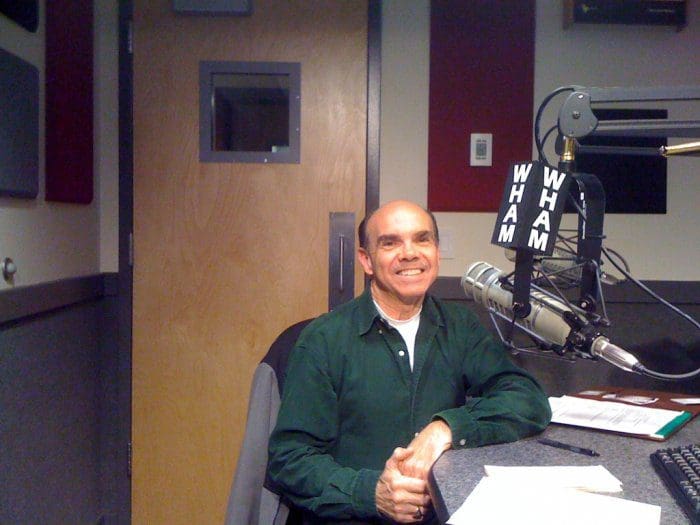Beyond Your Years with Luis Martinez
Take Time to Visit Your Money
One of those rituals that I engage in from time to time is to ‘Visit My Money’. It’s something that I learned from a colleague after he retired. Why this topic? Because in my work as an executive career coach I’ve observed how some highly intelligent and highly educated people sometimes lose track of a very important aspect of their life – keeping score of home financials.
Visiting your money can mean a number of things depending on where you are in your career cycle. If you’re still actively employed or managing a small practice or business it means taking steps to ensure that all that you’ve worked for so diligently is still there. Here are some questions to ask yourself and some practical steps you can follow:
Do you have a job? It is important to check your pay stubs every payday, monitoring deductions to make sure they are correct. Check accuracy of deductions for health and benefits, 401(k) / 403(b), direct deposits/automatic withdrawals for loans or charity donations, travel reimbursements and federal and State tax withholdings. This later point is important so you can make adjustments to your tax deductions during the year and end up with a balanced tax return on April 15.
Many companies now have direct payroll deposit and digital pay stubs. Watch that pay stub! Someone near and dear to me thought he had been saving into a 401(k) savings plan with company match only to discover a year later that he had not re-enrolled. He had not checked any of his biweekly digital paystubs so he missed $1,500 of company match! Also, adjust your withholding – if you have too much tax withheld through the year you will end up loaning money to the Federal / State Government at zero interest.
Have you accessed your bank account recently? I have friends who say (with perverse pride), “I haven’t balanced my checkbook in years!” Well, it’s a lot more than that. You should access your account online or in person at the nearest branch of your bank at least once a month to ensure that everything is correct and that no one has intervened in your account (it happens sometimes by family members with access). You should also monitor accuracy of third parties with access for automatic withdrawals and direct deposits.
As you monitor your bank account, make sure you have matching ‘puts and takes’. One lady I know was approached by what she thought was her bank with which she had a credit card. She paid off her credit invoice via the third party which turned out to be a complete scam and she still owed thousands to the bank’s credit card.
Do you have a wealth manager? Consider meeting with her at least twice a year and make adjustments to your portfolio as appropriate due to changes in the markets. If you’re paying your advisor a handsome fee, why would you pass on the opportunity to learn about investing, and market forces and how they affect your portfolio? Consider chatting with your advisor for a long, long time; Dom Pullano observes: “As retirees and senior citizens live longer they should consider investments with total return that keep pace with their needs to age 100.”

Luis Martinez in WHAM 1180 Studio
Let’s assume for a moment that you don’t have a wealth advisor. Then, at least once a year do a simple Net Worth calculation:
- Get a notebook and mark the first page “2016”, for the end of last year.
- Itemize all your assets – home (you can look up market value of your own house in Zillow.com, or Trulia.com, or similar), Savings account, Checking account, CD’s, Retirement accounts (IRA’s, 401(k)’s), market value of your car(s), (using Kelley Blue Book or similar), personal property of significant value (art, heirlooms, collections, antiques).
- Add up all your Assets.
- Now, itemize all your liabilities – this includes mortgage on your home (check your December payment stub for current payoff amount), Home equity loans (also called second mortgages), car loan payoffs (contact the car finance company for a payoff amount), credit card payables (check your latest statement), Line of Credit payables and other liabilities.
- Add up all your Liabilities.
- Subtract all Liabilities from your total Assets = Net Worth.
- Now, this is the most important part: share this Net Worth information with your immediate family! Why? Because it will provoke a very healthy conversation about what needs to change in the coming year. Kelly Olczak advises to make a plan: “Getting to retirement is a different journey for everyone. You have to start with a plan, then focus on the plan, not what the market does every day.” Next December 31st, sit down and calculate your Net Worth again, and every year thereafter. I’ve been calculating our family’s Net Worth since December, 1977. It’s never too late to get started. So start. Now.
Luis Martinez is a guest blogger for St. John’s. He is an active senior that likes to observe and write about how people work at their careers, guide their businesses, strengthen their families, stay physically fit and mentally sharp, and race their sports cars. Luis habla español. Follow Luis on Twitter @BeyondYourYears, or email Luis@HumanCapitalSP.com
